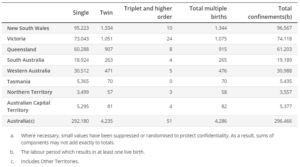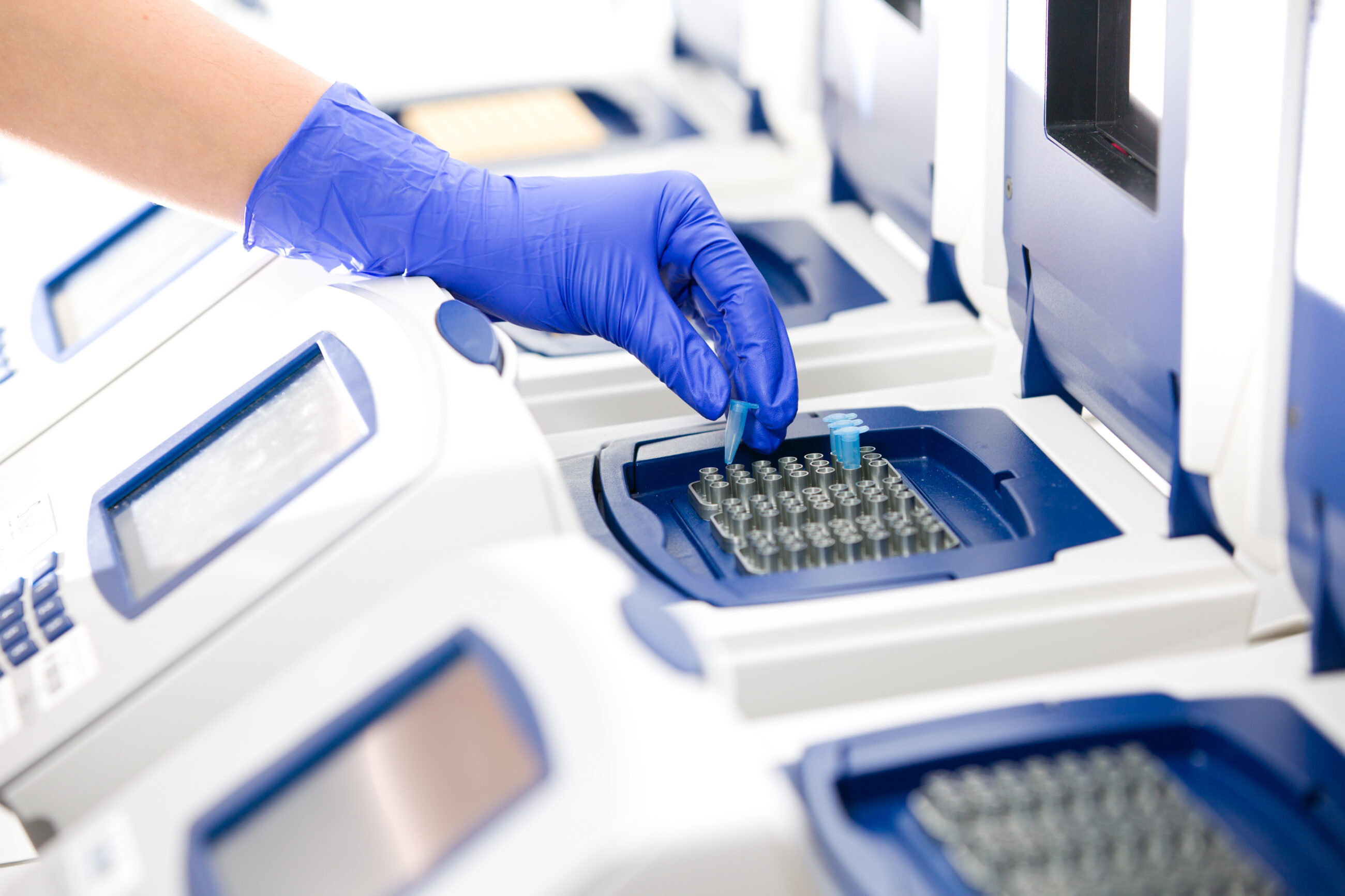
Identical or Fraternal? Twin DNA Zygosity Testing
According to the Australian Bureau of Statistics, 1.4% of the 300,684 births registered in Australia in 2022 were pregnancies resulting in multiple birth (defined as a pregnancy resulting in two or more children, at least one of which is live born). Most of these multiple births were twins, with only 51 being triplets or higher order.

Monozygotic or dizygotic classification
The characterisation of multiple births is called zygosity. Twins can be classified as monozygotic (MZ or identical) or dizygotic (DZ, non-identical, or fraternal).
MZ twins occur when one egg is fertilised by one sperm and the embryo then splits into two. These twins are genetically the same and share 100% of their genetic information, but this doesn’t mean that everything about them is identical. They may have some different physical characteristics, such as birthmarks, hair patterns, and teeth development.
DZ twins occur when two separate eggs are simultaneously fertilised by two sperm. Fraternal twins share about 50% of their genetic information, just like any other sibling pair.
Determining zygosity
Knowing the zygosity of your twins is important for medical, social, financial, and ethical reasons. From a scientific perspective, the study of twins plays an incredibly important role in understanding the effect of environmental and genetic influences on development and has played a key role in a variety of fields from biology to psychology.
Scans performed during pregnancy are not a reliable way of determining zygosity as approximately one third of MZ pairs will have separate placentas. For about 70% of same-sex twins, an examination of the placenta and foetal membranes at birth will not give conclusive information about whether they are identical or not because DZ twins can implant so closely together in the womb that their placentas fuse, giving the appearance of a single placenta.
Because of the difficulties in determining zygosity during pregnancy and the fact that MZ twins may have slight differences in their physical appearance and DZ twins may appear very similar, the best way to determine zygosity is by undertaking a DNA test.
How a DNA zygosity test works
A DNA zygosity test at Identilab involves the collection of cells from inside the mouth of each twin and analysis of 23 DNA markers from those samples. The test is quick and painless and can be performed at any age. DNA profiles obtained from identical twins will be the same and those from fraternal twins will be different.
Your report will include a table showing the DNA markers tested and the results for each twin. In the example below, you can see that the results for Twin 1 match at each of the DNA markers with Twin 2, meaning they are identical.
Example of results for identical twins:
| DNA Marker | Twin 1 | Twin 2 |
| D3S1358 | 16,17 | 16,17 |
| vWA | 15,17 | 15,17 |
| D16S539 | 9,10 | 9,10 |
A probability of relationship is given for DNA zygosity testing, just as it is for paternity test results, except in this case the probability relates to whether the twins are identical or fraternal.
For the results above, the report might say, “The results of the DNA test indicate that Twin 1 and Twin 2 are 20 billion times more likely to be monozygotic (identical) twins than dizygotic (non-identical) twins (corresponding to a probability of 99.99999995%, using Australian Caucasian population data).”
It is important to note that this statistic does not say how identical your twins are, that is, it is not correct to say that your twins are 99.99999995% identical. It is the probability that they are identical, and not fraternal.
In the next example you can see that the results for Twin 1 do not match at each of the DNA markers with Twin 2, meaning they are not identical.
Example of results for non-identical twins:
| DNA Marker | Twin 1 | Twin 2 |
| D3S1358 | 16,17 | 14,16 |
| vWA | 15,17 | 14,17 |
| D16S539 | 9,10 | 10,10 |
For these results, the report will say, “The probability that Twin 1 and Twin 2 are monozygotic (identical) twins is 0%, as they do not match at all the genetic markers tested.”
Identilab’s DNA zygosity test can be ordered online and costs $175. Results are available within 5 business days of us receiving the samples back in the laboratory.
If you still have questions regarding DNA zygosity testing, we are always happy to answer them! Please don’t hesitate to call us on 1300 114 294 or email us at [email protected].
















